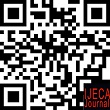Exploring the Arabic Learning Strategies at Senior High School
Abstract
This research aims to reveal and describe the Arabic language learning strategies implemented at Al-Falah Senior High School Padang. This research employs a qualitative descriptive approach, The data collection methods used in this research are interview with head and two arabic taechers. Then,observation by directly observing Arabic language learning activities carried out in this Madrasah. The data analysis technique steps used in this research are: Data Collection, data collection activities in this research are by using interviews, observation and documentation. then Data Reduction, Data Presentation, Verification and confirmation of conclusions. The reseacrh findings are the Arabic learning at this school shows a comprehensive approach through combining the Merdeka and 2013 curriculum. Although various learning methods and media have been implemented, including Sam'iyyah Syafawiyyah, Qawa'id wa Tarjamah, and projectors LCD and computers, the main challenge lies in the lack of student interest, It is caused by the low relevance of the material to their needs or interests,. Learning evaluation includes assessment of attitudes, knowledge competencies, and skills, providing a holistic picture of student progress. Although efforts are made through extracurricular and special programs, in-depth evaluation of learning strategies in dormitories is crucial to increasing learning effectiveness. The implications of this research indicate the need for enhancing teaching strategies and student motivation to overcome the challenge of insufficient interest in learning Arabic at this school, By focusing on designing materials relevant to daily life and conducting ongoing evaluations of extracurricular Arabic language programs in the boarding school..
Keywords
Full Text:
DOWNLOAD [PDF]References
Abboud, P. F. (1971). Arabic Language Instruction. Review of Middle East Studies, 5(2), 1–23. https://doi.org/10.1017/S0026318400052779
Admin, A., & Amirudin, N. (2017). Problematika Pembelajaran Bahasa Arab. Tamaddun : Jurnal Pendidikan Dan Pemikiran Keagamaan, 20(2), 1–12. https://doi.org/10.30587/tamaddun.v0i0.66
Al-Qatawneh, S., Eltahir, Mohd. E., & Alsalhi, N. R. (2020). The effect of blended learning on the achievement of HDE students in the methods of teaching Arabic language course and their attitudes towards its use at Ajman University: A case study. Education and Information Technologies, 25(3), 2101–2127. https://doi.org/10.1007/s10639-019-10046-w
Alyahyan, E., & Düştegör, D. (2020). Predicting academic success in higher education: Literature review and best practices. International Journal of Educational Technology in Higher Education, 17(1), 3. https://doi.org/10.1186/s41239-020-0177-7
An, Z., Gan, Z., & Wang, C. (2020). Profiling Chinese EFL students’ technology-based self-regulated English learning strategies. PLOS ONE, 15(10), e0240094. https://doi.org/10.1371/journal.pone.0240094
Assaly, I., & Jabarin, A. (2021). Arab Israeli EFL teachers’ perceptions and practices vis-à-vis teaching higher-order thinking skills: A complicated relationship. Language Teaching Research, 13621688211032426. https://doi.org/10.1177/13621688211032426
Balakrishnan, V., & Gan, C. L. (2016). Students’ learning styles and their effects on the use of social media technology for learning. Telematics and Informatics, 33(3), 808–821. https://doi.org/10.1016/j.tele.2015.12.004
Bassiouney, R., & Katz, E. G. (2012). Arabic Language and Linguistics. Georgetown University Press. https://books.google.co.id/books?hl=id&lr=&id=q3yPgYdx1RgC&oi=fnd&pg=PP2&dq=Arabic+Language+and+Linguistics.+Georgetown+University&ots=ZQCd4dlXUE&sig=7-hb2WgV_yURuudRnWBhACEDblA&redir_esc=y#v=onepage&q=Arabic%20Language%20and%20Linguistics.%20Georgetown%20University&f=false
Buehl, D. (2023). Classroom Strategies for Interactive Learning (4th ed.). Routledge. https://doi.org/10.4324/9781032680842
Canbay, F. (2020). The Relationship between Self-Regulation and Use of Language Learning Strategies in Secondary School Students. PASAA: Journal of Language Teaching and Learning in Thailand, 60(2), 1–22. https://eric.ed.gov/?id=EJ1259097
Cowie, N. (2009). Observation. In J. Heigham & R. A. Croker (Eds.), Qualitative Research in Applied Linguistics: A Practical Introduction (pp. 165–181). Palgrave Macmillan UK. https://doi.org/10.1057/9780230239517_8
Dörnyei, Z. (2020). Innovations and Challenges in Language Learning Motivation. Routledge. https://doi.org/10.4324/9780429485893
Hasibuan, R. (2022). تدخل لغة باتاك مندائيلنج على استعمال اللغة العربية لدى طلاب معهد دار العلوم سيباهو. Islamic Manuscript of Linguistics and Humanity, 4(2), 1–16. https://ejournal.uinib.ac.id/jurnal/index.php/imlah/article/view/5061
Hasibuan, R., & Fitriani, L. (2023). Innovative Approach to Reading Skill Development: Jigsaw Strategy and Crossword Puzzle Media. Journal of Arabic Language Learning and Teaching (JALLT), 1(2),61-74 Article 2. https://doi.org/10.23971/jallt.v1i2.98
Hasibuan, R., Fitriani, L., & Aziz, A. (2023). Application of Jigsaw Strategy with Crossword Puzzle Media in Reading Skill Learning. Al-Uslub: Journal of Arabic Linguistic and Literature, 7(02), 207-218 Article 02. https://doi.org/10.30631/al-uslub.v7i02.152
Hasibuan, R., Haerullah, I. S., & Machmudah, U. (2023). TPACK dalam Pembelajaran Bahasa Arab (Studi Implementasi dan Efektivitas). Islamic Manuscript of Linguistics and Humanity, 5(1), 23-34 Article 1. https://ejournal.uinib.ac.id/jurnal/index.php/imlah/article/view/7103
Hasibuan, R., Hasanah, M., & Faisol. (2024). Improving Balaghah Mastery Through Teams Games Tournaments with Crossword Puzzle Media in Higher Education. Al-Lisan: Jurnal Bahasa (e-Journal), 9(1), 33-50 Article 1. https://doi.org/10.30603/al.v9i1.4520
Hasibuan, R., & Jundi, M. (2023a). Crafting Success: Creative Management Techniques for Darul Ulum Sipaho Islamic Boarding School’s Arabic Language Learning Program Implementation. Kitaba, 1(3), 135-146 Article 3. https://doi.org/10.18860/kitaba.v1i3.24218
Hasibuan, R., & Jundi, M. (2023b). إدارة البيئة العربية: تحليل تنفيذ الترغيب والترهيب في معهد دار العلوم الإسلامية الحديثة سيبوحو. Islamic Manuscript of Linguistics and Humanity, 5(2), 76-95 Article 2. https://ejournal.uinib.ac.id/jurnal/index.php/imlah/article/view/7677
Hasibuan, R., Jundi, M., & Elbaghdadi, Z. A. (2023). Al Samātu Al Lughowiyyatu Lil Arobiyyati Fil Ma’had Al Islāmi Dirōsatu Hālati Fi Ma’hadi Al ‘Ashri Bil Indōnῑsiyyā. Lughawiyyat: Jurnal Pendidikan Bahasa Dan Sastra Arab, 6(2), 127-144 Article 2. https://doi.org/10.38073/lughawiyyat.v6i2.1088
Hasibuan, R., & Rosyidi, A. W. (2023). Greene & Petty تحليل الكتاب المدرسي" العربية تجمعنا" سلسلة للناطقين بغيرها للصف الثاني المدرسة الإبتدائية على أساس. Nady Al-Adab: Jurnal Bahasa Arab, 20(1), 63–78. https://doi.org/10.20956/jna.v20i1.24587
Hassan, B. A. (2012). Language and identity: Impact of globalization on Arabic. Annuals of the Faculty of Arts Ain Shams University, 40(1), 421–445. https://aafu.journals.ekb.eg/article_6086_c926bf30d91a542c5d39e6691101df01.pdf?lang=en
Jamshed, S. (2014). Qualitative research method-interviewing and observation. Journal of Basic and Clinical Pharmacy, 5(2), 87–88. https://doi.org/10.4103/0976-0105.141942
Jundi, M., & Hasibuan, R. (2023). Enhancing Arabic Language Proficiency among Students: A Case Study of Language Matriculation Strategies at Al-Hasyimiyah Darul Ulum Sipaho Islamic Boarding School. Kilmatuna: Journal Of Arabic Education, 3(2), 114-129 Article 2. https://doi.org/10.55352/pba.v3i2.619
Kamusella, T. D. (2017). The Arabic language: A Latin of modernity? Journal of Nationalism, Memory and Language Politics, 11(2), 117-145, https://doi.org/10.1515/jnmlp-2017-0006
Kim, K., & Park, Y. (2017). A Development and Application of the Teaching and Learning Model of Artificial Intelligence Education for Elementary Students. Journal of The Korean Association of Information Education, 21(1), 139–149. https://doi.org/10.14352/jkaie.2017.21.1.139
Lesort, T., Lomonaco, V., Stoian, A., Maltoni, D., Filliat, D., & Díaz-Rodríguez, N. (2020). Continual learning for robotics: Definition, framework, learning strategies, opportunities and challenges. Information Fusion, 58(1), 52–68. https://doi.org/10.1016/j.inffus.2019.12.004
Masturoh, F., & Mahmudi, I. (2023). The Implementasi Kurikulum Merdeka Belajar dalam Pembelajaran Bahasa Arab. Kalamuna: Jurnal Pendidikan Bahasa Arab dan Kebahasaaraban, 4(2), 88-100 Article 2. https://doi.org/10.52593/klm.04.2.07
Masuram, J., & Sripada, P. N. (2020). DEVELOPING SPEAKING SKILLS THROUGH TASK-BASED MATERIALS. Procedia Computer Science, 172, 60–65. https://doi.org/10.1016/j.procs.2020.05.009
Maziriri, E. T., Gapa, P., & Chuchu, T. (2020). Student Perceptions towards the Use of YouTube as an Educational Tool for Learning and Tutorials. International Journal of Instruction, 13(2), 119–138. https://eric.ed.gov/?id=EJ1249144
Merriam, S. B. (1988). Case study research in education: A qualitative approach (pp. xx, 226). Jossey-Bass. https://psycnet.apa.org/record/1989-97006-000
Miles, B. M., Huberman, A. M. and Saladana. (2014). Qualitative Data Analysis A Methods Sourcebook. Edition 3 (p. 22). SAGE Publications.
Noor, A. F. M., Shukor, K. A., Saharudin, N. A., & Abd Rahman, M. F. (2021). The Achievement Of Outcome-Based Education (OBE) Aims And Islamic Education Self-Regulated Learning Strategies: A Pilot Study.
Owens, J. (2015). Arabic language history and the comparative method. International Journal of Arabic Linguistics, 1(1), Article 1.
Rakhlin, N. V., Aljughaiman, A., & Grigorenko, E. L. (2021). Assessing language development in Arabic: The Arabic language: Evaluation of function (ALEF). Applied Neuropsychology: Child, 10(1), 37–52. https://doi.org/10.1080/21622965.2019.1596113
Ritonga, M., Kustati, M., Budiarti, M., Lahmi, A., Asmara, M., Kurniawan, R., Putri, N., & Yenti, E. (2021). Arabic as foreign language learning in pandemic COVID-19 as perceived by students and teachers. Linguistics and Culture Review, 5(1), Article 1. https://doi.org/10.21744/lingcure.v5n1.726
Rukajat, A. (2018). Pendekatan Penelitian Kualitatif (Qualitative Research Approach). Deepublish.
Sánchez-Santamaría, J., Boroel-Cervantes, B. I., López-Garrido, F.-M., & Hortigüela-Alcalá, D. (2021). Motivation and Evaluation in Education from the Sustainability Perspective: A Review of the Scientific Literature. Sustainability, 13(7), Article 7. https://doi.org/10.3390/su13074047
Setiawan, H., Khair, B. N., Ratnadi, R., Hakim, M., & Istiningsih, S. (2020). Developing HOTS-Based Assessment Instrument for Primary Schools. 216–220. https://doi.org/10.2991/assehr.k.200827.054
Sun, H., Xie, Y., & Lavonen, J. (2022). Exploring the structure of students’ scientific higher order thinking in science education. Thinking Skills and Creativity, 43, 100999. https://doi.org/10.1016/j.tsc.2022.100999
Tyas, E. H., & Naibaho, L. (2021). HOTS LEARNING MODEL IMPROVES THE QUALITY OF EDUCATION. International Journal of Research -GRANTHAALAYAH, 9(1), Article 1.
Wekke, I. S. (2016). Pembelajaran Bahasa Arab di Madrasah. Deepublish. https://books.google.co.id/books?hl=id&lr=&id=CeNeDwAAQBAJ&oi=fnd&pg=PR6&dq=Pembelajaran+Bahasa+Arab+di+Madrasah.+Deepublish.&ots=JqeIlDHqI3&sig=eAS6s4wsjknVK4Qcq1m-MP-QkiY&redir_esc=y#v=onepage&q=Pembelajaran%20Bahasa%20Arab%20di%20Madrasah.%20Deepublish.&f=false
Wekke, I. S. (2019). Strategi Pembelajaran Bahasa Arab Madrasah Minoritas Muslim . Deepublish. https://books.google.co.id/books?hl=id&lr=&id=r3uMDwAAQBAJ&oi=fnd&pg=PR5&dq=Strategi+Pembelajaran+Bahasa+Arab+Madrasah+Minoritas+Muslim+.+Deepublish.&ots=WHCrSurxxi&sig=_zkIub4e6AF74RX2Il1Y7sBJN-Q&redir_esc=y#v=onepage&q=Strategi%20Pembelajaran%20Bahasa%20Arab%20Madrasah%20Minoritas%20Muslim%20.%20Deepublish.&f=false
Xuan, D., Ismail, W. M., & Zailani, M. A. (2020). Non-Native Arabic Learners’ Social Media Usage and Motivation Influencing Learning of Arabic Language in Malaysian Public Universities. International Journal of Language Education, 4(2), 258–275. https://eric.ed.gov/?id=EJ1270917
Zhu, S., Pan, S., Zhou, C., Wu, J., Cao, Y., & Wang, B. (2020). Graph Geometry Interaction Learning. Advances in Neural Information Processing Systems, 33, 7548–7558. https://proceedings.neurips.cc/paper/2020/hash/551fdbb810aff145c114b93867dd8bfd-Abstract.html
Zurqoni, Retnawati, H., Rahmatullah, S., Djidu, H., & Apino, E. (2020). Has Arabic Language Learning Been Successfully Implemented? International Journal of Instruction, 13(4), 715–730. https://eric.ed.gov/?id=EJ1270652
DOI: https://doi.org/10.31764/ijeca.v7i1.22287
Refbacks
- There are currently no refbacks.
Copyright (c) 2024 Ranita Sari, Renni Hasibuan, Titi Fitri, Rafid Sibah At-Tamimi

This work is licensed under a Creative Commons Attribution-ShareAlike 4.0 International License.
IJECA (International Journal of Education and Curriculum Application) already indexed:










___________________________________________________________________
| |
____________________________________________________________________
IJECA Publisher Office:








.jpg)




